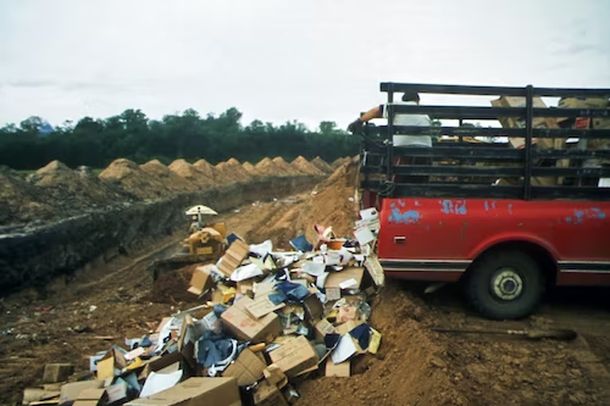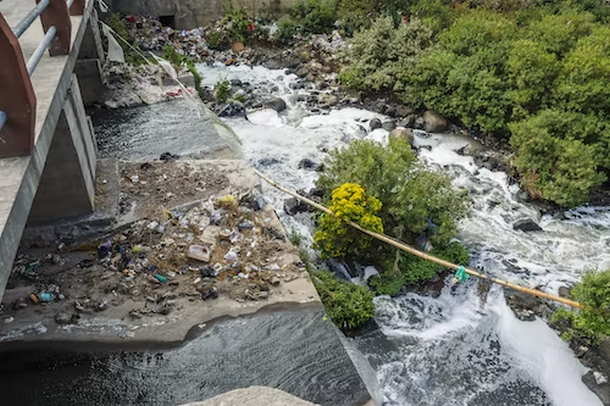Managing A Landfill? Follow These Tips To Solve Common Problems
Are you tasked with managing a landfill? If so, you’re not alone. In the United States, there are more than 3,000 active landfills and nearly 10,000 closed landfill sites. With so many landfills in operation, it’s no surprise that some common problems crop up occasionally. Here are some tips on how to solve some of the most common landfill problems.

1. Consider Bird Netting Installation
Installing bird netting is an environmentally-friendly way of controlling pests in your garden or other outdoor space. Bird netting has many advantages, such as not harming the birds, being flexible to fit virtually any size or shape of the area, and lasting several years before needing replacement. It can be used to protect fruit trees, delicate flowers or shrubs, or newly sown seeds so that they remain undamaged by birds.
The netting can be installed quickly and with minimal effort once you know what you are doing. The use of bird netting at your landfill will keep birds away from the trash piles, making them less likely to spread bacteria and disease. Before investing in a bird netting installation project, it pays to research and learn the various techniques available to make an informed decision.
2. Use Methane Capture Systems
Methane is a powerful greenhouse gas released into the atmosphere when organic materials decompose in landfills. To reduce methane emissions, many landfills have begun using methane capture systems. These systems are designed to collect the methane gas before it is released into the atmosphere and use it as a fuel source instead of letting it escape into the air.
This helps reduce harmful emissions and provides an additional energy source for the landfill. Many landfills have already begun using this technology, and it has made a difference in reducing methane emissions.
3. Monitor Groundwater Quality
Groundwater contamination is another common problem at landfills. Leaching of hazardous materials can occur when rainwater comes into contact with landfill material, resulting in contaminated groundwater that can be harmful to humans and wildlife if consumed or inhaled. To reduce the risk of groundwater contamination, it is crucial to monitor the water quality in the area and take steps to prevent leaching.

This can include installing a protective liner on top of the landfill material that will help keep rainwater from coming into contact with hazardous materials or regularly testing for contaminants in nearby bodies of water. By monitoring and reducing the risk of groundwater contamination, you can help ensure that the area remains safe for years to come.
4. Make Sure the Landfill is Properly Ventilated
Most of us never think twice about what happens to our trash once we put it in the bin, but managing a landfill is a complex and vital task. Landfill sites are engineered with several features to control odors and manage harmful gasses, including proper ventilation. By ensuring that landfill areas have an adequate supply of clean air, workers can reduce the buildup of toxic methane gas–a byproduct of organic waste– and protect themselves from dangerous fumes that could otherwise accumulate.
Maintaining proper ventilation for landfills near residential areas is especially crucial to keep nearby homes safe from potentially hazardous gasses. Therefore, close monitoring and regular maintenance are essential for landfill workers who want to comply with safety standards.
5. Be Aware of the Leachate Level in the Landfill
One of the key environmental factors to be considered in landfill management is leachate, which can be highly hazardous if it reaches certain levels. Leachate is wastewater from rain or snow melting in a landfill and contains potentially dangerous contaminants such as nitrates, phosphates, heavy metals, and organic compounds. If too much leachate accumulates at a landfill site and infiltrates the groundwater system nearby, it can contaminate the surrounding environment.
For this reason, landfill managers must be aware of leachate levels and create plans to manage them properly. Open systems that utilize aeration lagoons are one way to control leakage – these systems allow the liquid to evaporate naturally, reducing pollution potential. Ultimately, being mindful of the leachate level in landfills is essential for keeping our planet clean and healthy.
6. Regularly Check for Signs of Settlement or Instability
If you are living in a community near a landfill, it can be hard to know when unstable conditions might occur. The onus is on us all to watch for signs of settlement or instability that could affect the surrounding area and its inhabitants.
This means regularly checking for any visible changes, such as cracks in foundational structures above and below ground, smaller signs of shifting soil, or any other indications something is off-kilter. Taking proactive measures like these to maintain our local landfill area can help ward off potential disasters down the road—and possibly even save lives.
By following these tips and paying attention to common landfill problems, you can help ensure that landfills are managed efficiently and environmentally responsibly. With proper maintenance, landfills can continue to be used safely for years.
